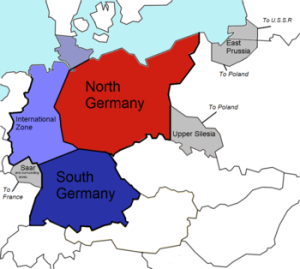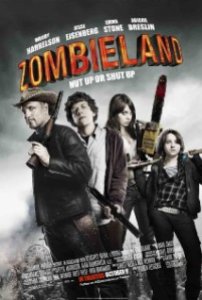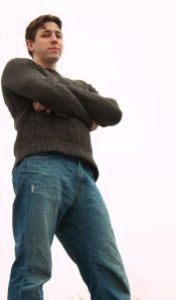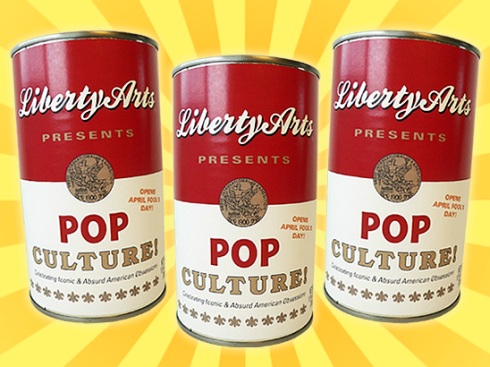Popular culture
Guest Post by Clay Morgan: Lessons From a Pop Teacher & a Few Zombies
Just the other day I was giving a lecture on Europe after World War II. Many of the students were fading and staring blankly in my general direction. I was about to explain one of the most important parts of the entire course and needed them alert and free of mental paralysis.
Good thing I know so much about zombies….
Way back on Monday, April 25, 2011 at precisely 8:07 AM, I emailed Clay Morgan from EduClaytion.com. He and I had established an “easy, breezy, beautiful” rapport; we’d talked on the phone a few times, and for a while, we were on the same cyber-page. But suddenly, Clay had a Twitter icon on his page. And I didn’t.
What the deuce? I thought. So I tapped out a quick note.
Dude, I seriously need to understand Twitter. I either need a 15 year-old girl. Or you. Can you call me?
Clay responded like a firefighter would to a burning building. He emailed me and assured me Twitter was “pretty intuitive” and that I could probably figure it out. He said he had faith in me.
Whaaaat? Twitter? Intuitive? To whom?
Clearly, he did not read this article.
We set up a time to talk.
Then I lost his phone number.
Still, I had every intention of making Twitter priority #1 on my list of Things To Do. (You know, after I got back from Florida. And all the grocery shopping was done. And I had unpacked and put the suitcases away and done all the laundry and scrubbed the baseboards and taken out the garbage and fed the animals.
(Note: We have no pets. Not even a goldfish. Not even an ant.)
I was a little bit horrified that I had so easily morphed into one of the typical student-types: the kid who pretends the deadline hasn’t come and gone, but never goes to talk to the teacher about it.
But Professor Morgan was onto me.
Clearly I was delaying. We set up a time to conference around noon.
After my massage.
(What? I have a long-standing back injury, people.)
On the day of our exciting teleconference, we started with the simple stuff.
Clay explained that, for a writer, the purpose of Twitter is to help network with other writers, to acquire followers, and to spread one’s writing around to other interested readers. He said Twitter can be a place to gather with my fellow writers, where I can find people to hold me accountable to achieve my writing goals, and where I can find people willing to critique my work.
That all sounded good.
He explained it also meant supporting and promoting the people whose writing I adore.
I heard “cheerleader.” I was a cheerleader in high school. I may have lost my splits, but I can still cheer. And if tweeting and re-tweeting my favorite writers’ stuff was going to help them, I could drink that Kool-Aid.
So Clay taught me the basics. About the Timeline. And how to check my Direct Message Box — to see if anyone has sent me a private message.
“How do I know that?”
Clay patiently explained.
He also told me I should always check Mentions to see if anyone has tweeted any of my posts and, if they have, that I should be absolutely certain to send that person a short thank-you.
“It’s Twit-tiquette,” Clay explained.
He taught me about how to set up a list of my most favorite bloggers. And while we were on the phone, I understood everything perfectly.
Clay was extremely patient and gracious. And then, like any good therapist smart person with outstanding time management skills, after one hour, he announced our session was up.
Whaaaat?
“I haven’t mastered this yet!” I whined.
He assured me that I’d figure it out if I played around with it a bit.
I thanked Clay for “eduClayting” me, and I messed around on Twitter for a while.
I tried to send messages to the people I knew best.
Eventually, I got a response from Clay himself.
Whaaaaat? I was sending messages to myself? Awk.Ward.
I tried to figure out that mess. And I set out again.
This time I heard back from Leanne Shirtliffe aka: Ironic Mom.
After a few weeks, I saw I got my first retweet! And then I got a RT from Mark Kaplowitz, someone whose writing I really like:
 And then that started to happen more and more.
And then that started to happen more and more.
Eventually, I figured out the secret language of hashtags: the weird letters that come after the numbers’ symbol (#). Like #MyWana. Or #IYKWIM. For a while, I felt like I sitting alone at a table in the middle school cafeteria, and everyone knew everyone else and everyone knew what they were doing – everyone except me. But then I learned that you can Google these letters after the number symbol and find out the inside joke. And boom, I was instantly sitting at the cool kids’ table because I was speaking the same language.
And guess what, writer tweeps are a lot nicer than the mean girls in middle school.
The big moment came when author Kristen Lamb sent me a tweet. I would post it, but it’s kind of like looking into the sun. Too much truth. Your pupils might burn, and I wouldn’t want to be responsible for that.
These days, I have myself on a strict Twitter diet. I check in three times a week, spend 15 minutes responding to people, sending thank-yous, and trying to connect with one new person. I literally set a timer. It is really easy for Twitter to become a time suck.
Alas, now that all this time has passed, I don’t remember how to add people to that list Clay helped me to create. Also, I’m not sure what I’m supposed to do with that list. I think it was supposed to save me time somehow. I’m not really sure. So that’s not great.
I told Clay that I was going to write a blog about how much he helped me.
I estimated that I would have that post written by late August.
So I’m a little ahead of schedule.
But I really need to work on my fall curriculum. And my book.
You remember, my book?
The thing that started all of this…
Yeah.
It’s calling me.
Gotta run.
Do you use Twitter? If so, who taught you? And what do you get out of it? Any funny stories about stuff that has happened to you while you were learning to tweet? What are your Twitter woes?
Tweet This Twit @RASJacobson
Today’s guest blogger is Clay Morgan from EduClaytion.com. Besides being one of my very first cyber-friends in the bloggersphere, Clay is an amazing educator. He is a revolutionary. You know that game six-degrees of separation? Well, in the world of bloggers, it seems nearly everyone knows Clay. He gets around. Today he is sharing his thoughts about using Pop Culture in the classroom.
As a teacher, I’m often amazed at what pools of knowledge I must dive into in order to effectively communicate with my students.
Just the other day I was giving a lecture on Europe after World War II. Many of the students were fading and staring blankly in my general direction. I was about to explain one of the most important parts of the entire course and needed them alert and free of mental paralysis.
Good thing I know so much about zombies.
I’m not referring to the students although any teacher doing the job for a while knows what it’s like to stand before a room of pupils imitating the undead. I’m talking about the zombies of culture, specifically movies.
See, I needed to explain the crisis of Germany after Hitler’s death in 1945. Nations like America and England recognized the importance of a strong German nation, strength that was critical to European recovery. At the same time, someone had to keep an eye on nasty Joe Stalin and the Soviet Union.
But those pesky Russians and their nervous cohorts in France were sick of Germany. They despised the nation that had brought war on them twice in a quarter century. Tens of millions had already been killed. They thought letting those Germans come back again was just asking for global destruction. Plenty of folks wanted Germany turned into a parking lot surrounded by fields.

So I’m teaching this anti-German plan named for U.S. Treasury Secretary Henry Morgenthau. Students must understand these events to get a grasp of the Cold War, our centerpiece for the rest of the semester. They didn’t seem too enthused. Then I remembered Zombieland.
Most of my students haven’t seen the greatest films ever made about WWII such as Schindler’s List, Saving Private Ryan, or Life is Beautiful.
But they have seen Zombieland, a 2009 flick in which Jesse Eisenberg (the guy from Social Network) plays Columbus—a college student trying to survive in a zombie dominated world.
Columbus lives by about 30 rules, the most famous of which is probably #4: Double tap. You might not know what that means, but my college students do. It means shoot twice when the walking dead want you to join them. It means be certain that the monster you just defeated doesn’t get back up.

Do you see where I’m going with this?
My class was alive and kicking when I told them that the Morgenthau Plan was the 20th century attempt to double tap. Germany was the zombie. This analogy led to a great discussion on world power and how we should handle those responsible for human atrocities. My students will never forget the stakes of the post-war world with such a powerful visualization. Based on past experience, I have a feeling I’ll get an email in a couple years thanking me for a good class and joking about double tap.
Some education types say that movie references have no place in an academic setting. My question to them would be whether or not they want to connect with students or not. The past couple generations have been saturated in culture. It’s long been in our heads and now it’s in the palm of our hands.
Students live and breathe this stuff, so why not make it work for us? The best way to teach someone what they do not understand is by using what they do. You wouldn’t walk into a Chinese classroom and expect the students to understand your English. Same thing goes in Western classrooms. If you fail to speak their language, you will not be heard.
Applications for using pop culture in educational settings are only limited by our creativity. That’s why a bunch of us started PopTeacher.com, to pool together the best ideas out there so we’ll have a nice reservoir of ideas to dive into.
I expected opposition and ignorance from naysayers. I was even prepared to double tap their arguments. I did not expect such a fabulous response so quickly.

PopTeacher.com has already been featured in the Pittsburgh Post-Gazette, and I’m now being asked to speak at collegiate conferences about these ideas. That’s pretty funny because my pedagogical strategy consists of a) showing up for work and b) being myself.
The best response has come from dozens of teachers—grade school to higher ed—who are eager to share their experiences and ideas. More email comes in every week.
Teaching as a career is a grind that can wear us down. Then we risk getting tired and disconnecting. We lose effectiveness when that happens. Why not have some fun and dive into our bountiful culture? You never know where the interests of others will lead a discussion. You might even find a way to bring a group to life by talking about the undead.
So what do you think? Do you like the way Clay thinks? Would you want to be a student in his class? Have you ever been in a class where the teacher used Popular Culture references? What do you remember? Or do you think this kind of approach dumbs down our educational system?
Clay will field your comments today.



